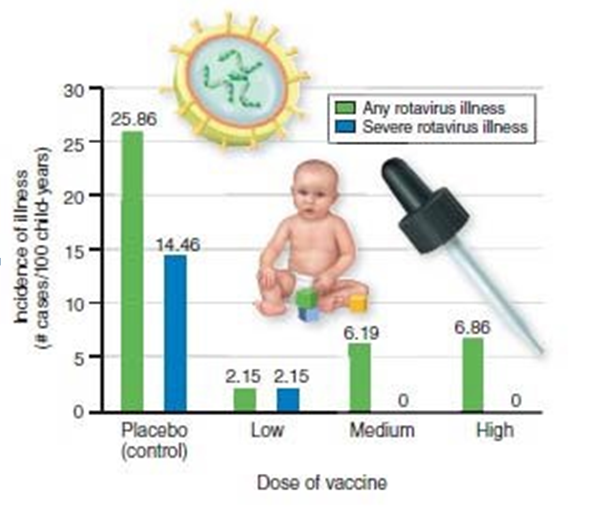The molar teeth of herbivorous mammals are especially effective at _____
A) cutting
B) ripping
C) grinding
D) splitting
E) piercing
Answer: C
You might also like to view...
In the graph, the X-axis is showing different doses of vaccine, including "placebo," "low," "medium," and "high." These levels of vaccine were applied to different groups of babies to test if and how much the vaccination helped reduce the incidence of rotavirus, an illness that can quickly dehydrates infants to critical or fatal levels. These dosages in this medical study represent

This figure shows graphed medical research results from a study on a new vaccine. The research was done in an effort to determine if a new vaccine would be effective in preventing potentially dangerous rotavirus infections in infants. Green data bars represent occurrence of infant cases that had normal rotavirus strains that aren't critically dangerous. Blue data bars represent occurrence of infant cases that had more dangerous rotavirus strains that can hospitalize or lead to fatality of infants.
A. the independent variable.
B. the standardized variable.
C. the dependent variable.
D. the control group.
E. the placebo.
Due to countercurrent flow in fish gills, __________
with the __________ oxygen concentration is always in contact with __________ containing __________ oxygen. a. blood; most; water; less b. water; least; blood; less c. water; greatest; blood; greater d. blood; greatest; blood; less e. water; greatest; water; less
following a scent; others
are silent. Erect ears and barking are due to dominant alleles located on different chromosomes. A dog homozygous for both dominant traits is mated to a droopy-eared, silent follower. The phenotypic ratio expected in the F1 is a. 9:3:3:1. b. 100 percent of one phenotype. c. 1:1. d. 1:2:1. e. 3:1.
Membrane structure. "Head" - phosphate group (polar)
A) Hydrophilic B) Hydrophobic